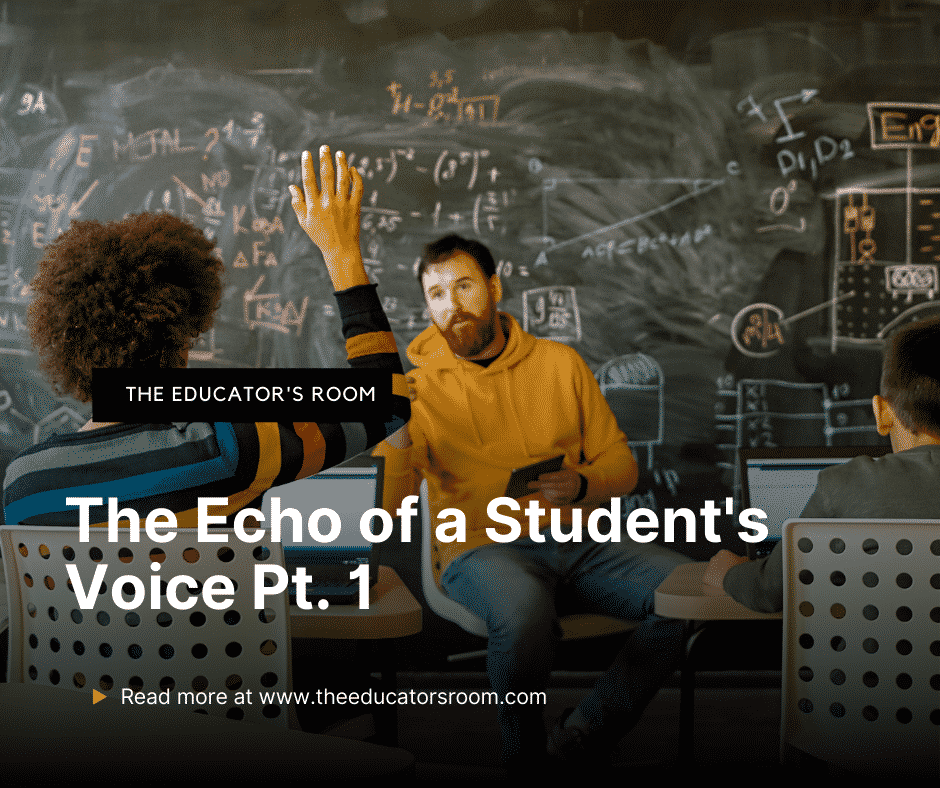Comparing education to business is taboo within the pedagogical workforce. Rebukes of disgust at the nerve of doing such a thing come into play when said comparison is made. Bear with me as I explore the similarities and how they can translate into classroom success.
The customer is always right. This is a popular concept enforced by most companies that sell goods and services. Entrepreneurs incorporate the interests of their customers as if this statement were a golden rule. The scope of their market shrinks when fewer people are considered for their demographic and profits suffer. A new take on this aphorism, according to Shep Hyken, is that the customer is not always right, but they are always the customer. If teachers employed this same methodology, viewing students as people with interests and capable of providing valuable input, students are more likely to demonstrate a genuine interest in school. Just like the subsequent increase in profits when customers are considered, grades will naturally rise when students’ voices are heard.
I’ve never met a teacher who wasn’t ecstatic when they had an entire class sold on an activity–kind of like a car dealer bagging a sale. Life makes sense to a teacher, or a salesperson, in those moments. We feel like we have managed to understand our students more when they begin understanding our purpose in class. The connection between the two sectors is closer than we would like to admit.
For students, the drive to truly engage in what you’re being taught–the incentives of education, be it rewards or more relatable material–rarely exists in K-12 education. The curriculum doesn’t appeal to them. We strive to garner authentic connections between students and their education, so what is stopping us from finding effective methods for accomplishing this? Future jobs will have these incentives.
Think about the prescribed purpose of getting a good education: to get a job that pays comfortably so that you can be well on your way to an equally comfortable retirement using all the money you earned from your good education. In theory, the more degrees and diplomas you accrue, the more money you will/should be making. Nonprofits, inherently magnanimous by name, only account for 10 percent of the workforce in the U.S. Ergo, not many graduates pursue careers in fields that don’t revolve around capital growth. Even then, nonprofit workers earn a paycheck.
I am not here to sell you on making a business out of education, but rather to give students the same courtesy of an infallible customer.
“Teaching is listening, learning is talking.”
Deborah Meier
Education tends to focus on the content that must be taught, before focusing on where it will land. However, in the business world, they focus on the customer and then modify the product in response to the customer base’s needs to achieve success. In business, success looks like profit. In education, success looks like how the students intellectually profit from the lesson. That being said, to maximize a student’s ability to profit–or learn–we should approach it no differently.
Students should be more than receptacles for the knowledge of a teacher. They want to be heard, and we should be setting good examples as teachers by learning how to listen more. If every teacher and administrator made room for student input in their lesson planning, they would see spikes in participation with every suggestion taken into consideration.
The hierarchy in public education leaves students out of the communication loop in terms of decisions made involving curriculum design and instruction. Some administrators omit teachers and take control as the only link in the chain. Maria Alicia Lyons from EdWeek describes how the difference between a difficult administrator and highly effective administrator lies in their ability to listen to teachers and take the input with the actual intent to use it. Difficult administrators may accept recommendations but will never put them into practice.
However, the chain of communication should not end at the teacher level. As the job description entails, teachers must think about how students learn most effectively. When do teachers have students begin thinking about how they learn rather than treating them as passive receptacles of information?
Metacognition has become an important factor in modern learning theories. The importance of metacognition, and lack thereof given, is explained by John Perry: “very strong evidence exists indicating that the effective teaching of metacognitive skills can make a significant difference for pupil outcomes. However, there is little to suggest that schools are using such strategies in any widespread manner.” We know that students should invest more time reflecting on the effects of school, their performance as an individual, and as a member of a larger learning community; yet, we can’t be bothered to ask simple questions.
- What is the best way you have ever learned something in school? What is the worst?
- Do you have any preferred methods of studying for the upcoming test?
- Did you understand the purpose of today’s class?
Teachers know how it feels to be left unheard, and we are in a prime position to ensure that students don’t share the same feelings of dismissal. Nobody wants to be discounted. Recognition by peers and figures of authority can be empowering, meaning we should see to it that the students develop an understanding of their own thought processes. The results, although not surprising, can evolve a teacher no differently.
“Including students’ perspectives and voices in teacher education is a rare phenomenon.”
Alison Cook-Sather, “I Am Not Afraid to Listen”: Prospective Teachers Learning from Students (2009)
Suggestions from students can easily register as complaints to teachers. Of course, a student does not want to complete digital worksheets in silence all day. Mind-numbing busy work gets the best of anybody. Students declaring their desire for a different approach, maybe even preference for a different teacher’s method, can feel like an affront on your craft as a teacher. This is a popular place for the dismissal of a student’s opinion on class instruction to occur. Cook-Sather references the research that has found the student’s likelihood of disconnecting with the teacher and their criteria stems from “whether or not students feel that their perspectives and participation in school change are taken seriously.”
Education is out of fashion and was arguably never in season. The nihilistic culture surrounding children in school has been growing for decades. School isn’t cool. It never was. But it could be.
Businesses, unlike teachers, try to fix the problem when a customer complains, rather than ignoring or arguing with the customer’s complaint. If teachers listened and tried to come up with solutions to any learning complications or preferences, it would not only make the class run more smoothly and effectively but would also help the student feel heard.
To build a bridge that connects the gap between students and teachers,
respect should be foundational.
Student Voice is a movement in many schools that has been driven by years of research. Kendel St. John & Lori Brie introduce the topic, stating, “Instead of a top-down, teacher-directed approach to learning, students play an active and equal role in planning, learning, and leading their classroom instruction.” Students become more active as a result of the shift in their position in the hierarchy. They are not rising in rank, per se, but you don’t have to completely give a traveler the reins, only let them point in the direction they want to go.






